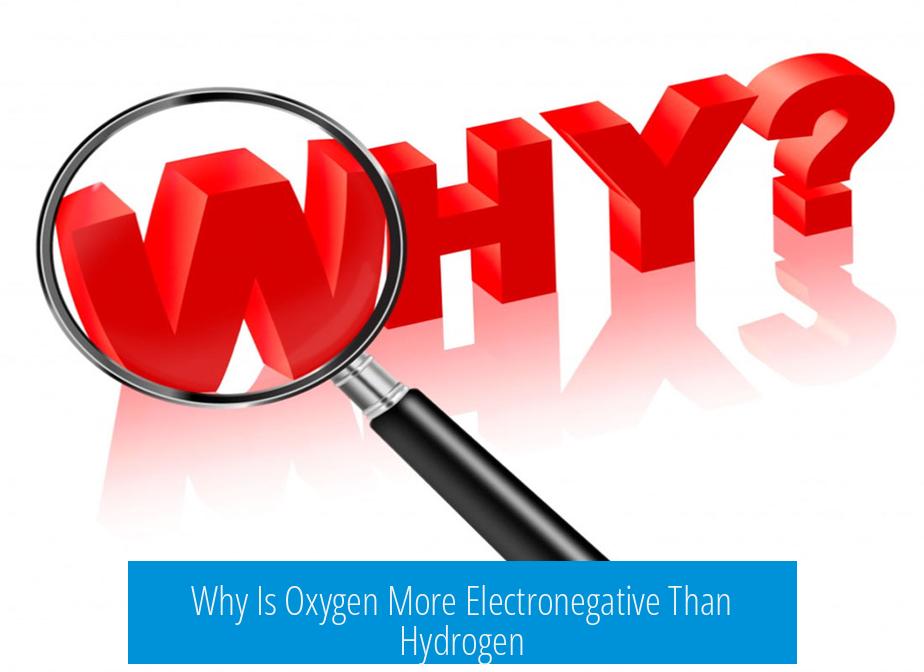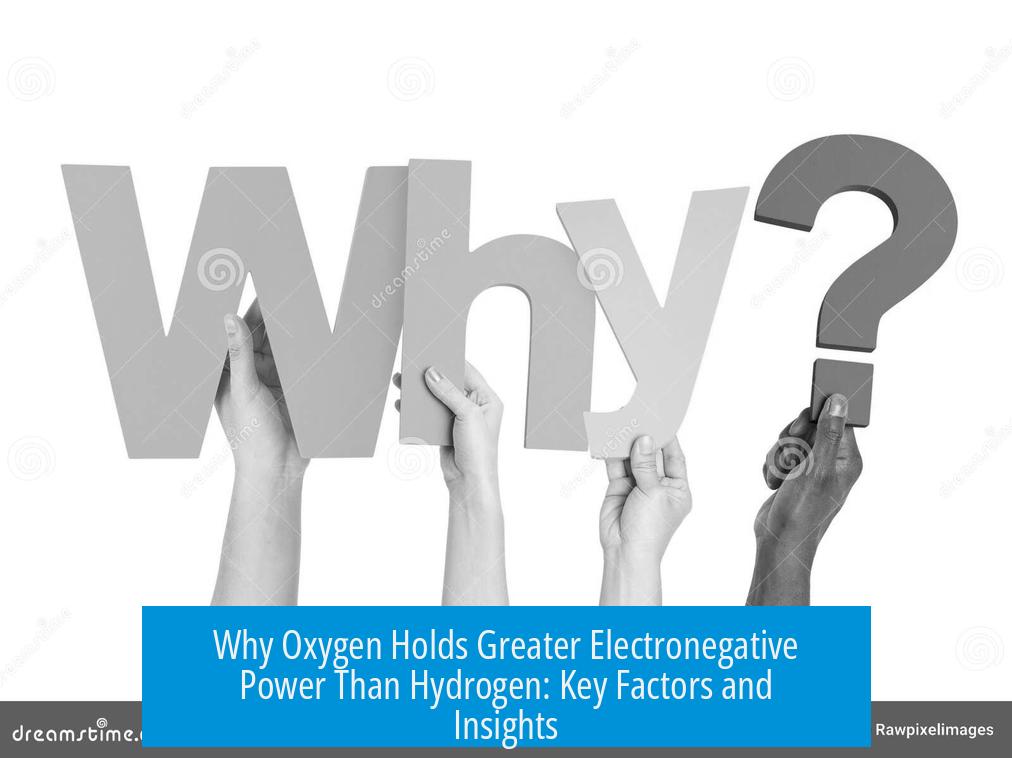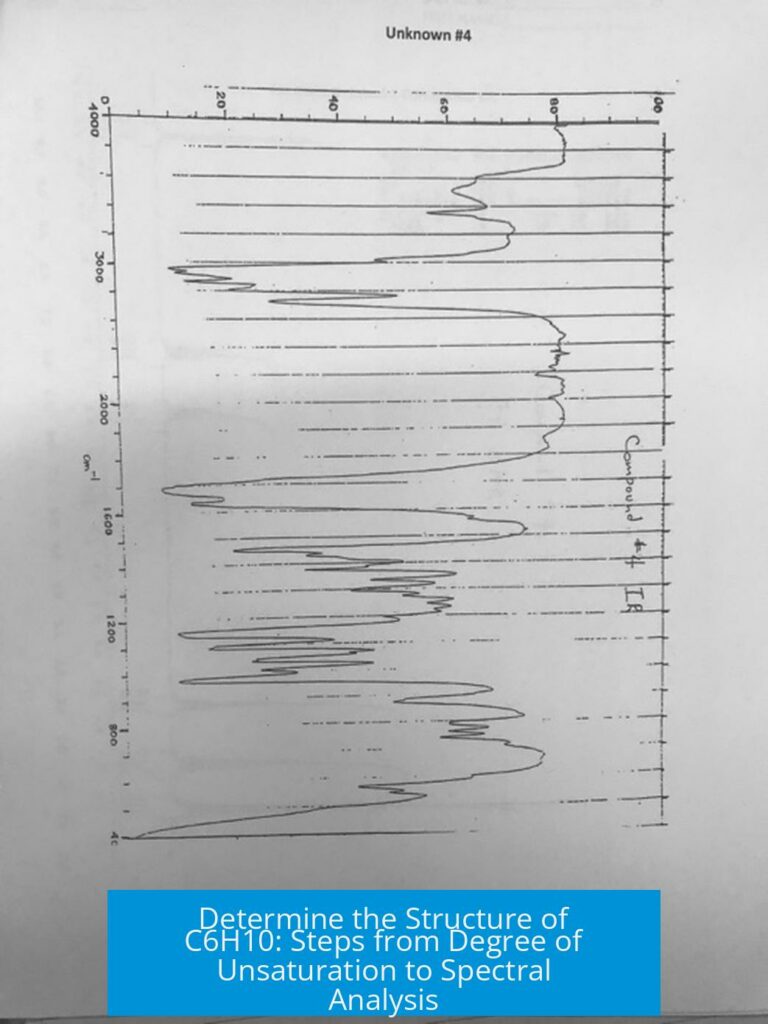Why Is Oxygen More Electronegative Than Hydrogen?

Oxygen is more electronegative than hydrogen because it has a larger number of protons, a higher effective nuclear charge, less electron shielding, and a smaller atomic radius, all of which contribute to a stronger pull on shared electrons in a chemical bond.
Number of Protons
Oxygen’s nucleus contains eight protons, while hydrogen has only one. This difference in positive charge allows oxygen to attract electrons more strongly when it forms bonds. More protons mean a stronger nuclear pull on electron density within molecules.
Effective Nuclear Charge

The effective nuclear charge (Z_eff) quantifies the net positive charge that outer electrons experience after accounting for shielding from inner electrons. Oxygen’s larger number of protons combined with limited shielding results in a higher Z_eff. Consequently, oxygen holds bonded electrons closer and more tightly than hydrogen.
Electron Shielding and Repulsion
- Oxygen has more electrons than hydrogen, which could lead to electron-electron repulsion.
- Despite this, the strong positive charge from oxygen’s protons outweighs repulsions.
- This allows oxygen to maintain a stronger attractive force on shared electrons.
Atomic Size

Oxygen’s smaller atomic radius compared to hydrogen means its nucleus is physically closer to the bonding electrons. This proximity increases electrostatic attraction. The closer the nucleus is to the electrons, the stronger the pull, thereby increasing oxygen’s electronegativity.
Summary of Factors Affecting Oxygen’s Electronegativity
| Factor | Oxygen | Hydrogen | Effect on Electronegativity |
|---|---|---|---|
| Number of Protons | 8 | 1 | Higher nuclear charge pulls electrons stronger |
| Effective Nuclear Charge | Higher Z_eff | Lower Z_eff | Stronger net pull on electrons |
| Electron Shielding | Moderate; less shielding | Minimal shielding | Oxygen’s strong pull dominates repulsions |
| Atomic Radius | Smaller | Larger relative | Closer nucleus attracts electrons more |
Key Takeaways

- Oxygen’s higher number of protons increases its nuclear charge.
- Effective nuclear charge for oxygen creates a stronger pull on electrons.
- Electron repulsion in oxygen is outweighed by proton attraction.
- Oxygen’s smaller atomic size brings its nucleus closer to bonding electrons.
- These combined factors explain oxygen’s greater electronegativity compared to hydrogen.
Why is oxygen more electronegative than hydrogen? Unlocking the mystery through atomic vibes
In a nutshell, oxygen is more electronegative than hydrogen because its nucleus packs a stronger positive punch that pulls electrons closer in a chemical bond. Let’s unravel why oxygen’s electron-loving charm outshines hydrogen’s shy appeal.
Electronegativity measures how strongly an atom attracts electrons towards itself when bonded. Oxygen and hydrogen atoms often pair up, like in water (H2O), yet oxygen plays the dominant role in hogging electrons. But why?
More protons, more pulling power

First, consider protons, the tiny positively charged particles inside an atom’s nucleus. Oxygen has 8 protons, while hydrogen sports just 1. It’s like a tug-of-war where oxygen pulls with eight hands and hydrogen with only one.
Protons create a positive charge that draws negatively charged electrons. The stronger this positive charge, the tighter the grip on electrons. Thus, oxygen’s higher proton count amps up its pull on shared electrons in a bond, giving it an electronegativity edge over hydrogen.
What’s this “effective nuclear charge”? Science’s version of electron attraction theory
Your gen chem professor wasn’t joking when declaring effective nuclear charge (Zeff) as chemistry’s MVP. This nifty concept boils down how much net positive force outer electrons feel after subtracting shielding effects from inner electrons.
Oxygen’s Zeff is higher than hydrogen’s because its many protons aren’t entirely masked by other electrons. Electron shielding works like a blockade, weakening nuclear pull. Oxygen’s electrons block each other a little, but because oxygen is compact, the effective nuclear charge remains strong.
This potent pull from oxygen’s nucleus makes its valence electrons cling closer and attract bonding electrons more fiercely than hydrogen, sealing oxygen’s status as the more electronegative atom.
Electron shielding vs. nuclear attraction: Who wins?
Okay, oxygen has more electrons than hydrogen — eight versus one. Wouldn’t more electrons repel each other and reduce attraction?
Great question. Electrons do repel, no doubt. But here, oxygen’s crowd of protons trumps the repulsion from electrons. The electric allure from 8 protons crushes any “push away” effect from electron-electron repulsion.
Hydrogen can’t match this nuclear muscle. So, while electron repulsion matters, it’s the dominant pull from oxygen’s protons that tips the electronegativity scale.
Size matters: Atomic radius and proximity counts
Imagine trying to pull a magnet close to a metal ball. The closer the magnet, the stronger the pull. Atomic size plays a similar role.
Oxygen is smaller than hydrogen when considering atomic radius. This means oxygen’s nucleus lies closer to its valence electrons. Since electrostatic force obeys distance rules — shorter distance, stronger force — oxygen’s proximity to bonding electrons enhances its grip.
Hydrogen’s single proton nucleus is a bit more ‘spread out’ from the electron cloud it shares, weakening its pull compared to oxygen’s compact nucleus.
Putting it all together – oxygen’s electronegativity mojo
Oxygen flexes its electronegativity muscles through a combo of a high proton count, strong effective nuclear charge, winning over electron repulsion, and a compact atomic size that hugs electrons tight.
These factors weave together into why oxygen’s electronegativity sits around 3.44 on the Pauling scale, while hydrogen lags with about 2.20. That gap influences how molecules behave — from water’s polar nature to the way oxygen interacts in countless compounds.
So why does this electronegativity difference even matter?
- Water’s sticky secret: Oxygen’s strong pull creates partial charges in H2O, resulting in hydrogen bonding and water’s unique properties.
- Chemical reactivity: Oxygen’s electron hogging leads it to be a great oxidizer — think rust and respiration.
- Biological impact: Oxygen’s electron affinity shapes life’s chemistry at a molecular level.
Practical tip: When in doubt, check nuclear charge and size!
If you want a quick guess on electronegativity, look at an element’s number of protons and atomic radius. More protons combined with a smaller radius usually mean stronger electron pull.
Got another pair to compare? Just ask, “Who has a nucleus-built stronger magnet effect?” The answer often settles the electronegativity debate.
Final thought: Chemistry’s simple tale of attraction
At the heart of electronegativity differences, you’ll find physics drama — nuclear charges pulling electrons, atoms sizing each other up, and electrons trying not to step on each other’s toes.
Oxygen wins the electronegativity showdown over hydrogen with aplomb because it’s got more protons, less shielding, and a snug atom size. Next time you sip water, remember: the oxygen atom is the real electron seducer behind the scenes.
Why does oxygen have a stronger pull on electrons than hydrogen?
Oxygen has more protons in its nucleus than hydrogen. This stronger positive charge pulls electrons more effectively in a bond. That leads to higher electronegativity for oxygen.
How does effective nuclear charge affect oxygen’s electronegativity?
Effective nuclear charge is the net positive charge felt by electrons. Oxygen’s higher effective nuclear charge pulls bonding electrons closer, making oxygen more electronegative than hydrogen.
Does electron repulsion reduce oxygen’s electronegativity?
Oxygen has more electrons, which can repel others. However, the attraction from its larger number of protons is stronger. This higher attraction makes oxygen more electronegative despite electron repulsion.
What role does atomic size play in the electronegativity difference?
Oxygen’s smaller atomic size means its nucleus is closer to bonding electrons. This proximity increases attraction to electrons, enhancing oxygen’s electronegativity compared to hydrogen.
Is the number of protons the only reason oxygen is more electronegative?
While the number of protons is key, factors like atomic size and effective nuclear charge also contribute. Together, they result in oxygen’s greater ability to attract electrons than hydrogen.





Leave a Comment